INDIAN ARMED FORCES CHIEFS ON OUR RELENTLESS AND FOCUSED PUBLISHING EFFORTS

The insightful articles, inspiring narrations and analytical perspectives presented by the Editorial Team, establish an alluring connect with the reader. My compliments and best wishes to SP Guide Publications.

"Over the past 60 years, the growth of SP Guide Publications has mirrored the rising stature of Indian Navy. Its well-researched and informative magazines on Defence and Aerospace sector have served to shape an educated opinion of our military personnel, policy makers and the public alike. I wish SP's Publication team continued success, fair winds and following seas in all future endeavour!"

Since, its inception in 1964, SP Guide Publications has consistently demonstrated commitment to high-quality journalism in the aerospace and defence sectors, earning a well-deserved reputation as Asia's largest media house in this domain. I wish SP Guide Publications continued success in its pursuit of excellence.
- Indian Air Force Aims for Full Indigenous Inventory by 2047 — Air Chief Marshal A.P. Singh
- Rajnath Singh assumes charge as Defence Minister for the second consecutive term
- Interim Defence Budget 2024-25 — An Analysis
- Union Defence budget 2024
- Prime Minister Modi Flies in the LCA Tejas
- New Chapter in India-Italy Defence Ties
- Airpower beyond Boundaries
IAF Chief Air Chief Marshal A.P. Singh: A bolder approach towards building capability indigenously; can strike anywhere as we have done in Balakot
The annual press day by Chief of the Air Staff Air Chief Marshal A.P. Singh was a testament to the Indian Air Force's strategic vision for modernisation and self-reliance
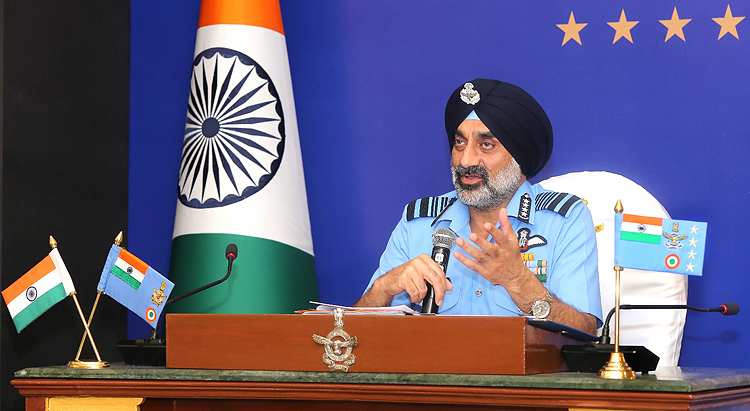
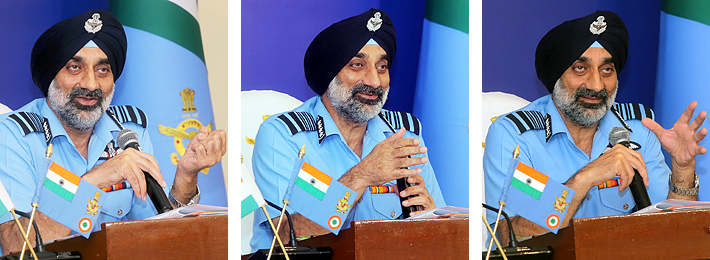
On the occasion of the Indian Air Force's annual press day, the new Chief of the Air Staff, Air Chief Marshal A.P. Singh addressed the media, highlighting pivotal advancements in the IAF's capabilities, particularly regarding the Tejas fighter aircraft and improvements in anti-defence systems.
In his address, the Air Chief announced that the IAF is looking at having the entire inventory produced in India by 2047. "It is important to have indigenous weapons systems to deal with any future security challenges," he said. "You cannot afford to have them being bought and rely on that supply chain. We must have these things being produced in India. We can't be stocking up everything forever. These things will have life. If we keep stocking up, we'll have wastage." Air Chief Marshal A.P. Singh said.
The IAF is looking at having the entire inventory produced in India by 2047. "It is important to have indigenous weapons systems to deal with any future security challenges," said Air Chief Marshal A.P. Singh.
Advancements in Fighter Aircraft (LCA Tejas & AMCA)
One of the major focal points of Singh's address was the ongoing development of the Tejas fighter jet. The IAF has made significant strides in integrating advanced technologies into the Tejas, enhancing its operational efficiency and combat readiness. Singh noted that these advancements not only improve the aircraft's performance but also ensure that it meets contemporary warfare requirements.
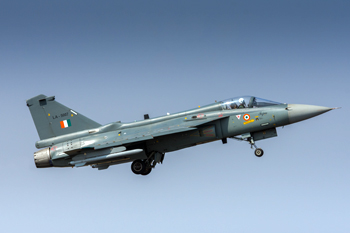
However, IAF Chief Air Chief Marshal A.P. Singh also flagged the delayed delivery of the LCA Tejas combat jets. "Unless you have private industry coming in and chipping in, I don't think we can continue relying only on one agency. Hindustan Aeronautics Limited (HAL) will also have its limitations when it comes to what it can do in a (certain) timeframe," Chief suggested during the interaction.
He clearly warned that India lags in technology and production capacity. He has earlier also explained in terms of achieving the necessary strength (number of squadron) that 'Atmanirbharta' cannot come at the cost of Nation's defence. Chief explained that besides HAL, there is a need to bring private industry to aerospace manufacturing. This is crucial in achieving scale and speed towards production and delivery. "It is a known fact that Tejas has been delayed. There is no doubt. There is also a promise that the production rate will be increased to 24 aircraft per year," he said.
The IAF has issued a Request for Information for the acquisition of 114 fighter jets under the Medium-Role Fighter Aircraft (MRFA) programme to boost overall capability
Chief also highlighted the recent revamp of HAL's fighter jet assembly line which is geared toward manufacturing 24 aircraft annually. He was cautiously optimistic about the inadvertent seven-month delay as per the roadmap. The IAF signed a contract for 40 LCA Mk1 in 2016. I was posted in ASTE when the first induction took place. Today in 2024, we have so far received 38," the Air Chief Marshal said.
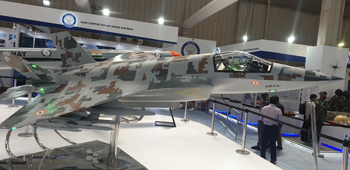
The Cabinet Committee has already sanctioned the 83 Tejas Mk1A with further planned orders for 97. Further, upon the advancement of Tejas Mk1A, IAF is aiming for seven squadrons each of the Tejas MK 2 aircraft and the 5th generation Advanced Medium Combat Aircraft (AMCA).
In his overall assessment, the Air Force Chief also highlighted the timeline for AMCA and Tejas –design and structural (R&D). Especially on the LCA advanced version, he said: "This year, December 27 is supposed to be the end of R&D for LCA Mk II."
Air Chief Marshal A.P. Singh emphasised the necessity of staying ahead of potential threats, with ongoing upgrades to existing anti-defence systems and acquisition of cutting-edge technologies
The Chief of Air Staff revealed plans for an increased operational deployment of Tejas, with ongoing efforts to expand its capabilities across various combat scenarios. The emphasis on indigenous production aligns with the government's 'Atmanirbhar Bharat' initiative, reinforcing the IAF's commitment to bolstering local aerospace manufacturing and innovation.
A Case for Medium-Role Fighter Aircraft (MRFA)
The Air Force Chief emphasised that while indigenous efforts are on, the quest for 114 MRFA should also happen parallel to boost the overall capability. Chief said the IAF has issued a Request for Information for the acquisition of 114 fighter jets under MRFA. The acquisition process further requires the RFP and an Acceptance of Necessity (AoN) from the government to move ahead.
"The IAF is committed to maintaining high levels of readiness through joint exercises and collaborations, ensuring that personnel are well-equipped to handle advanced systems and address contemporary threats."
Enhancements in Anti-Defence Systems
The IAF's focus on enhancing anti-defence systems was a key topic. Singh outlined ongoing upgrades and new technology acquisitions aimed at effectively countering emerging threats, ensuring air superiority.
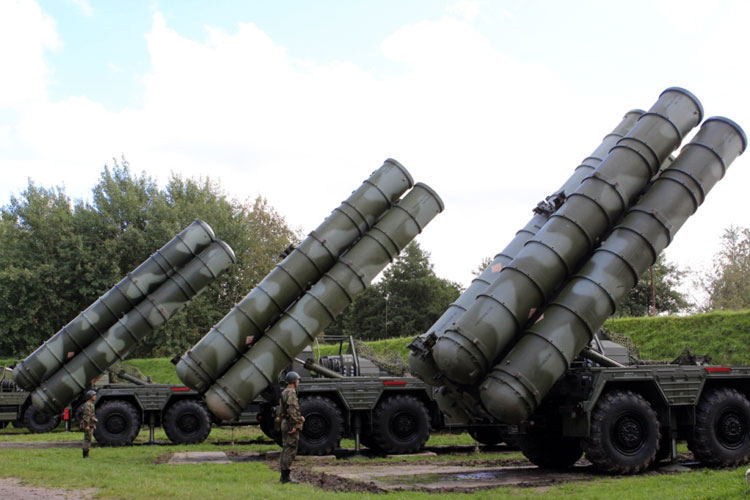
In an era where air superiority is paramount, Singh addressed the IAF's strategic focus on enhancing its anti-defence systems. He announced a series of upgrades to existing capabilities and the acquisition of cutting-edge technologies aimed at countering emerging threats effectively. This proactive approach is designed to fortify the IAF's ability to penetrate hostile airspace and protect its assets from sophisticated adversarial systems.
In its highly advanced air defence arsenal, Russia has delivered three S-400 missile system units to India, and the Chief also talked about the rest of the units under the timeline. Singh emphasised the necessity of staying ahead of potential threats, indicating that the IAF is continuously evaluating and upgrading its strategies in response to an evolving security landscape. This commitment not only enhances operational readiness but also underscores the importance of adaptive tactics in modern warfare.
Commitment to Indigenous Development
A significant theme of the press day was the IAF's unwavering commitment to indigenous development. Singh reiterated the importance of reducing dependency on foreign technology, stating that self-reliance is crucial for national security. The IAF is actively supporting initiatives aimed at fostering local innovation and capability building in aerospace technology.
By promoting domestic production, the IAF is not only enhancing its operational capabilities but also contributing to the broader goal of economic growth through the aerospace sector. Singh's remarks emphasised collaboration with the Indian defence industry, which plays a vital role in the country's strategic landscape.
ACM Singh reiterated that while India lags in technology and production rates compared to China, the IAF's training and human resources are significantly superior
IAF's manpower and operational superiority against China
On asked if IAF is capable of taking China, Air Chief Marshal said: "We have done our analysis. We don't have a design to go offensive unnecessarily. Only when we are pushed will we be doing something."
He emphasised impeccable training and multinational military exercises with highly advanced militaries worldwide. "India interacts with more air forces as compared to China and hence the training is better. As far as the human angle is concerned, we are way ahead of them," he said.
"So, we have our plans in place. One place we can positively say we are training much better than them. We have exposure much better than them. Because we do come to know through our sources how they train, how many different air forces they interact with and how many do we interact with. So, I am very confident that as far as the human angle is concerned, as far as our people behind the machines are concerned, we are way ahead of them."
However, Chief also made a point that as far as technology is concerned, "we may not be so good as of now". "We have lagged. We were better than them in technology too some time back. But we have lagged in that and we need to catch up with it. As far as production rates are concerned, we are way behind. We need to catch up with that. And that will happen over a while. It cannot happen overnight," he further emphasised.
To ensure that personnel are equipped to handle advanced systems, Singh highlighted ongoing training programmes that prioritise skill development and operational preparedness. He stated that the IAF is committed to maintaining high levels of readiness, with joint exercises and collaborations with other branches of the armed forces being key components of this strategy.
These training initiatives are crucial for ensuring that the IAF remains agile and effective in addressing contemporary threats, further solidifying its position as a formidable force in the region.
Manish Kumar Jha is a Consulting & Contributing Editor for SP's Aviation, SP's Land Forces and SP's Naval Forces and a security expert. He writes on national security, military technology, strategic affairs & policies.





